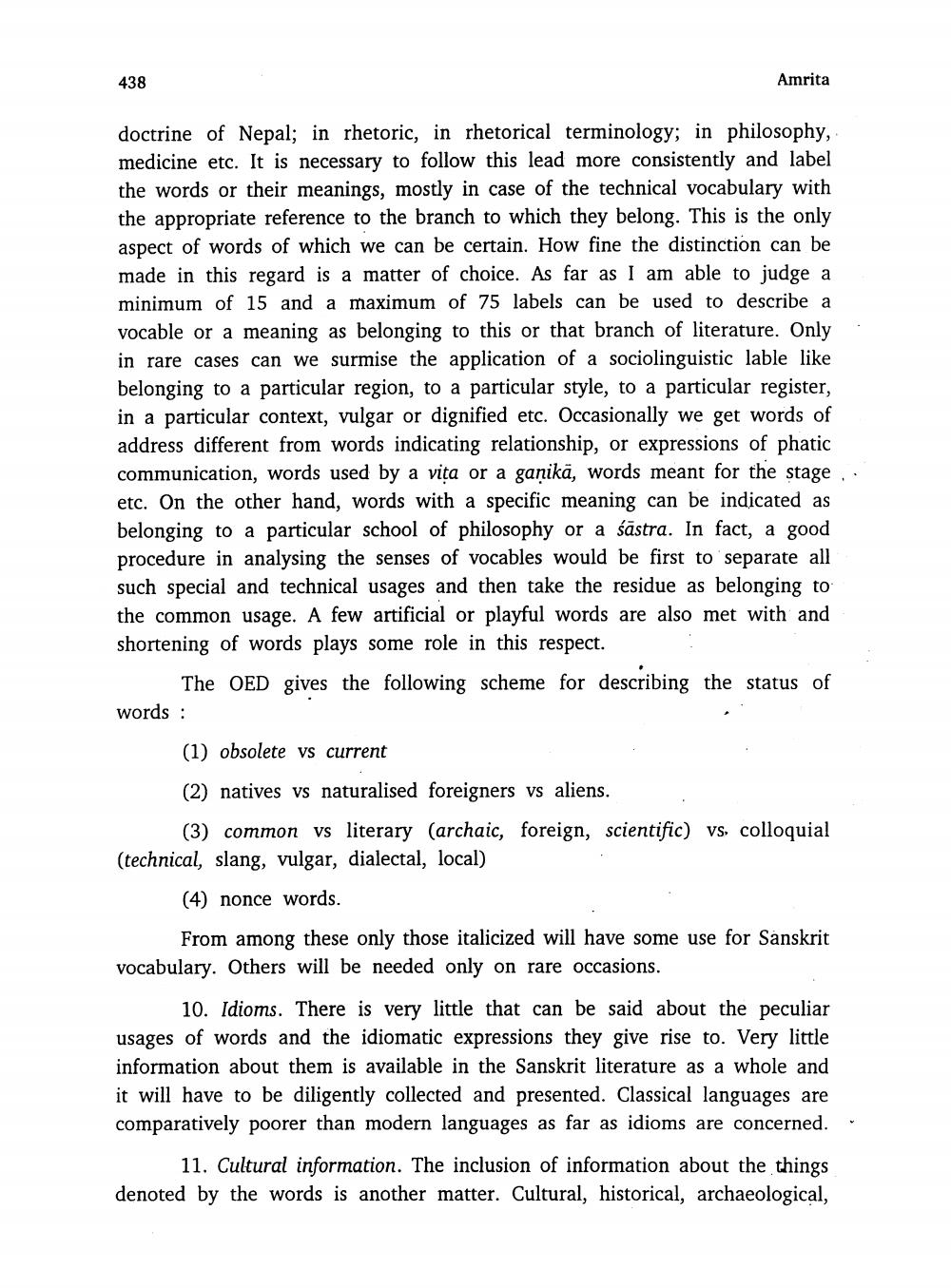________________
438
Amrita
doctrine of Nepal; in rhetoric, in rhetorical terminology; in philosophy, medicine etc. It is necessary to follow this lead more consistently and label the words or their meanings, mostly in case of the technical vocabulary with the appropriate reference to the branch to which they belong. This is the only aspect of words of which we can be certain. How fine the distinction can be made in this regard is a matter of choice. As far as I am able to judge a minimum of 15 and a maximum of 75 labels can be used to describe a vocable or a meaning as belonging to this or that branch of literature. Only in rare cases can we surmise the application of a sociolinguistic lable like belonging to a particular region, to a particular style, to a particular register, in a particular context, vulgar or dignified etc. Occasionally we get words of address different from words indicating relationship, or expressions of phatic communication, words used by a vita or a ganikā, words meant for the stage. etc. On the other hand, words with a specific meaning can be indicated as belonging to a particular school of philosophy or a śāstra. In fact, a good procedure in analysing the senses of vocables would be first to separate all such special and technical usages and then take the residue as belonging to the common usage. A few artificial or playful words are also met with and shortening of words plays some role in this respect.
The OED gives the following scheme for describing the status of words :
(1) obsolete vs current
(2) natives vs naturalised foreigners vs aliens.
(3) common vs literary (archaic, foreign, scientific) vs. colloquial (technical, slang, vulgar, dialectal, local)
(4) nonce words.
From among these only those italicized will have some use for Sanskrit vocabulary. Others will be needed only on rare occasions.
10. Idioms. There is very little that can be said about the peculiar usages of words and the idiomatic expressions they give rise to. Very little information about them is available in the Sanskrit literature as a whole and it will have to be diligently collected and presented. Classical languages are comparatively poorer than modern languages as far as idioms are concerned.
11. Cultural information. The inclusion of information about the things denoted by the words is another matter. Cultural, historical, archaeological,




